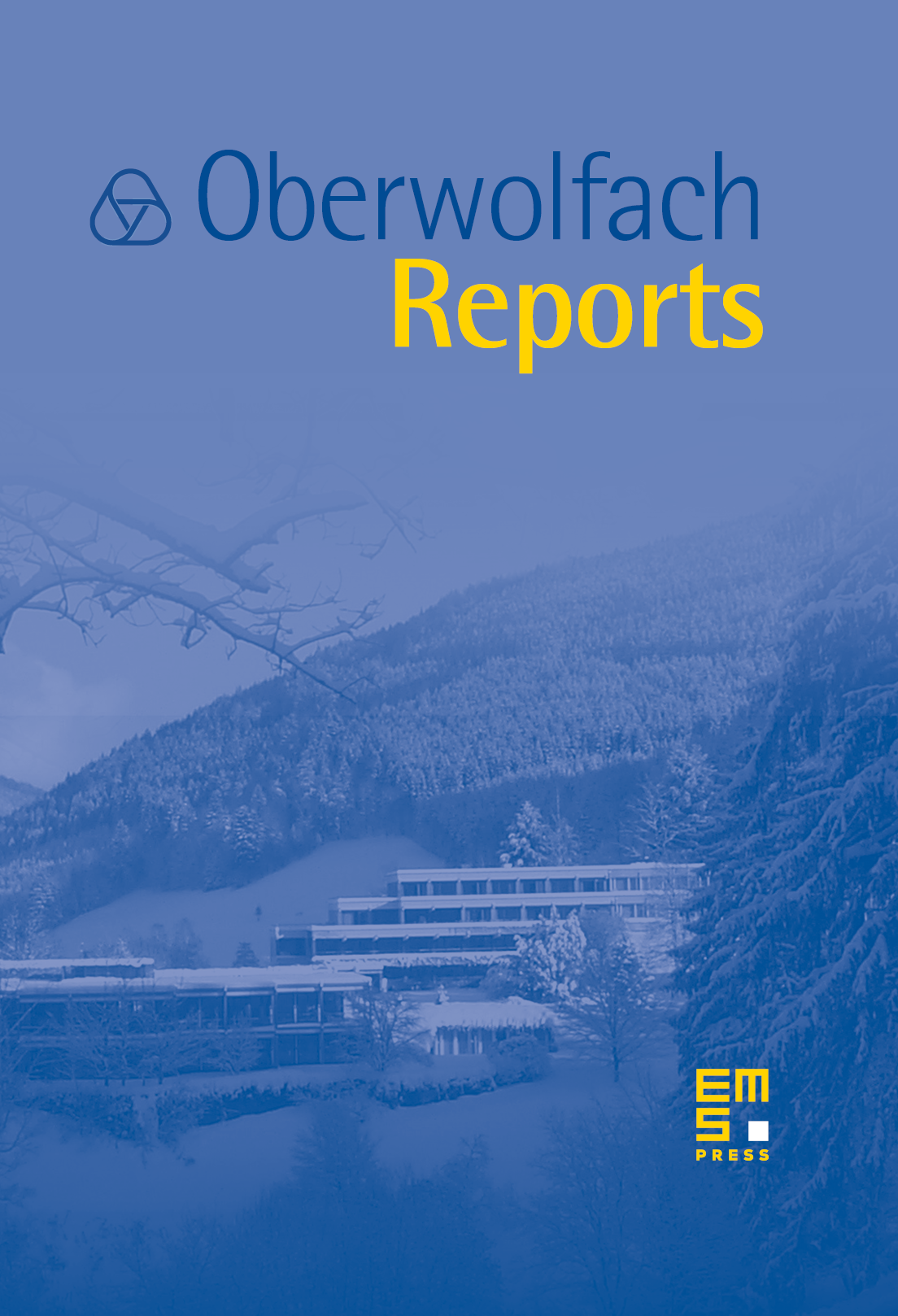Mathematical Aspects of General Relativity
Piotr T. Chruściel
Université François Rabelais, Tours, FranceJames Isenberg
University of Oregon, Eugene, United StatesAlan Rendall
Max-Planck-Institute for Gravitational Physics, Golm, Germany

Abstract
The conference brought together people working in mathematical general relativity, a field which lies at the interface of analysis, differential geometry and physics. There was a mix of established workers in the subject with participants at the start of their careers and researchers from neighbouring fields.
The Einstein equations are at the heart of general relativity theory. They form a system of evolution equations and their solutions are conveniently parametrized by initial data. These initial data are required to satisfy constraint equations and these were the topic of several lectures at the conference. The talks of Corvino and Pollack were concerned with recent progress in methods for constructing solutions of the constraints. An important concept for solutions of the constraints is that of mass, including quasilocal mass. This was a central theme of the talks of Degeratu, Huisken and Shi. Huisken introduced a striking new approach to the definition of mass based on isoperimetric inequalities. Dain presented a variational characterization of the extreme Reissner–Nordström solution, thus relating the study of the constraint equations to the theory of black holes. The talk of Wohlfarth was rather outside the main area of the conference. He described a new concept of geometry motivated by string theory which may come to enrich the circle of ideas within mathematical relativity.
Many of the talks at the conference were on evolution equations related to general relativity. Dafermos and Finster presented results related to the dynamical stability of black holes. Dafermos described new results on the rate of decay of solutions of the wave equation on the Schwarzschild spacetime while Finster explained applications of methods of functional analysis to the wave equation on the Kerr spacetime. Struwe's talk concerned uniqueness for supercritical nonlinear wave equations which from the point of view of the Einstein equations are an important example to compare with. The Maxwell equations are another important comparison system and Bauer showed how they can be used to understand more about radiation formulae. Velázquez gave an introduction to singularity formation in the Keller–Segel model, a parabolic system coming from mathematical biology. This is a possible source of insight for obtaining a rigorous understanding of critical collapse in general relativity. The talks of Andréasson, Choptuik and Lindblom dealt with various aspects of the application of numerical techniques to the study of the Einstein evolution equations. Choptuik showed impressive new simulations of coalescing black holes due to Pretorius which could hardly have been imagined just a year ago.
Cosmology is at present a very active area of research in general relativity. This is in part due to the challenge of understanding the observed accelerated expansion of our universe. Mathematics is beginning to make its mark in this subject and this was reflected by talks of Heinzle, Rendall and Tod.
Mathematical relativity is a meeting point for many ideas and the abstracts which follow give some idea of the variety of the subject. In fact the spectrum of topics discussed by the participants at the conference was much wider than those for which talks could be scheduled. By limiting the number of presentations it was possible to leave plenty of time for people to exchange insights. The lively interactions observed make us hopeful that this conference has given a boost to the development of the subject in the next few years.
Cite this article
Piotr T. Chruściel, James Isenberg, Alan Rendall, Mathematical Aspects of General Relativity. Oberwolfach Rep. 3 (2006), no. 1, pp. 73–118
DOI 10.4171/OWR/2006/02